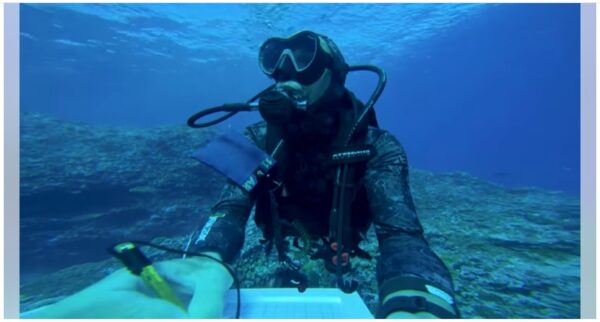今回の世界の海ザッピングはNational GeographicのFacebookの投稿からです。
今回のNational Geographicの記事は、ポリネシアのLine Islandsと言うところで魚の食性を調べている研究者の動画です。
動画的にはあまり面白いものではないので、その点はご了承ください。

陸上での調査(リサーチ)でしたら、そこまで大変じゃないですし、コストもかからないのですが、水中となると全然違います。
ダイビングをする準備もありますし、そのコストもかさんでいきます。
こういうところが陸上に比べて水中の生物や生態系を調べるのがなかなか進まない点になってしまうんですよね。
特に、深海になってしまうと余計にコストも時間もかかってしまいますよね。
でも生態系が保たれているか、また、今後どのように保護したりアプローチしたりすればいいのかの指針になっていくので、できれば詳細な調査がいろんな場所でたくさん行われるといいですね。
======================================
In this video, Juan is following around two herbivores (parrotfish and surgeonfish) and estimating how much they are feeding on different types of the sea bottom, like algae and coral. These surveys will help us better understand the role of herbivores in reef structure.
======================================
科学ダイビングに行くのがどんな感じか考えたことはありますか?
このビデオでは、フアンは 2種類の草食性の魚 (ブダイとニザダイ) を調査し、藻類やサンゴなどの海底のさまざまな種類のをどれだけ食べているかを推定しています。これらの調査は、サンゴ礁の構造における草食性の魚の役割をより深く理解するのに役立ちます。
======================================
Ever wondered what it’s like to go on a science dive? Here, Pristine Seas scientist Juan Mayorga takes us along as he surveys part of the reef at Millenium Island in the Southern Line Islands. In this video, Juan is following around two herbivores (parrotfish and surgeonfish) and estimating how much they are feeding on different types of the sea bottom, like algae and coral. These surveys will help us better understand the role of herbivores in reef structure. 🐟
National Geographic Pristine Seasさんの投稿 2023年6月4日日曜日

